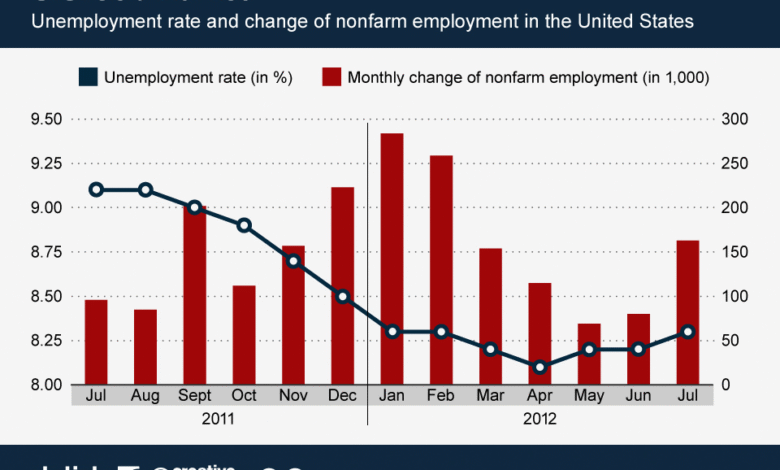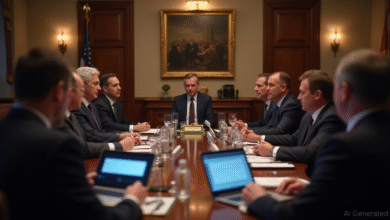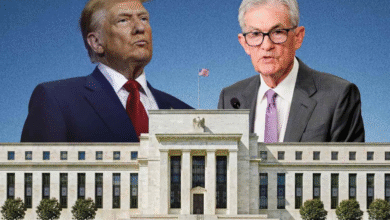U.S. Job Market Faces Slowdown Amid Economic Headwinds

The U.S. job market has taken a turn for the worse as recent reports reveal a troubling slowdown in job growth that has left many economists alarmed. In July 2025, only 73,000 jobs were added, significantly below the expected figures, highlighting a potentially deeper contraction in the labor market. Economic headwinds, including President Trump’s tariffs and a notable rise in the unemployment rate, are contributing to these labor market challenges, complicating the job landscape for many. As the economy grapples with these issues, job seekers find themselves navigating a stagnant market with limited opportunities. Employers are now hesitant to hire amidst uncertainty, suggesting that the overall health of the U.S. job market may be more precarious than previously understood.
Recent data concerning employment opportunities in the United States paints a concerning picture of the current labor landscape. With added job growth stagnating and exhibiting a noticeable slowdown, many are reflecting on the myriad factors affecting the workforce. The impact of trade policies such as tariffs, coupled with challenges posed by a rising unemployment rate, further complicates the situation. As hiring slows down and the economy faces potential setbacks, individuals seeking gainful employment must navigate a market rife with obstacles. The question of how various economic pressures will shape job availability remains a focal point for aspiring workers.
Current State of the U.S. Job Market
The current state of the U.S. job market reflects a worrying trend, as recent reports indicate a significant slowdown in job growth. In July 2025, reports showed the addition of only 73,000 jobs, falling short of the predicted threshold needed to accommodate population growth. This stark contrast to earlier months, where job gains were more robust, signals a potential contraction in employment opportunities. As the economy shifts, job seekers face increased challenges, highlighting the fragility of the job market under current macroeconomic pressures.
Economic experts note that the labor market is experiencing stagnation, with revised figures revealing that job growth in previous months was far weaker than initially reported. The adjustment of job numbers from May and June indicates broader vulnerabilities in the job market, suggesting that employers are not hiring at the rate necessary to sustain a healthy economic environment. With a labor force participation rate hitting its lowest since 2022, the implications for job seekers are grim, as they navigate a landscape filled with reduced employment prospects and heightened competition for available positions.
Frequently Asked Questions
What is driving the slowdown in the U.S. job market?
The slowdown in the U.S. job market is primarily driven by several economic headwinds, including President Trump’s tariff policies, which increase costs for businesses and create uncertainty, prompting reduced hiring. Additionally, high interest rates and restrictive immigration policies contribute to labor market challenges.
How are Trump tariffs impacting the U.S. job market?
Trump tariffs are impacting the U.S. job market by increasing import costs for businesses, which in turn puts pressure on profits and slows down job creation. This uncertainty about trade policies has made employers hesitant to hire, further complicating labor market challenges.
What is the current unemployment rate in the U.S. job market?
As of July, the unemployment rate in the U.S. job market rose to 4.2%, up from 4.1% in June. This increase highlights the rising labor market challenges and suggests a need for more robust job growth to sustain economic stability.
Are there signs of job growth slowdown in the U.S. job market?
Yes, signs of job growth slowdown in the U.S. job market are evident, with only 73,000 jobs added in July, significantly below the expected figures. This trend indicates that the job market is not keeping pace with population growth, raising concerns about economic resilience.
How have labor market challenges changed the job landscape in the U.S.?
Labor market challenges have resulted in a high degree of stagnation in the U.S. job market, with fewer opportunities and limited movement between jobs. Although layoffs remain low, the combination of slow hiring and increasing long-term unemployment indicates a struggling job environment.
What does the job growth data indicate about the future of the U.S. job market?
The recent job growth data, which included significant downward revisions for previous months, indicates a potentially troubled future for the U.S. job market. With job growth averaging only 35,000 per month recently, it underscores the pressing labor market challenges and economic headwinds facing the economy.
What factors contribute to the high rate of long-term unemployment in the U.S. job market?
The high rate of long-term unemployment in the U.S. job market, which has risen to nearly 25%, can be attributed to several factors. These include economic headwinds, a stagnating job market with few opportunities, and the impact of immigration policies that may restrict workforce participation.
| Key Point | Details |
|---|---|
| Sharp Slowdown in Job Growth | July 2025 report shows job growth far weaker than anticipated. |
| Tariff Policies Impacting Hiring | Trump’s tariffs contribute to slower job creation by raising costs for companies. |
| Stagnant Labor Market | Job seekers encounter limited opportunities, marked by a low hiring rate. |
| Revised Job Growth Figures | May and June job growth figures revised down sharply, indicating a contracting market. |
| Rising Unemployment Rate | Unemployment rose to 4.2% in July, and long-term unemployed figures increased. |
| Low Layoff Rates | Despite low layoffs, job seekers face high stagnation and limited hiring opportunities. |
Summary
The U.S. job market is currently facing significant challenges, as highlighted by the latest reports indicating a notable slowdown in job growth. With only a mere 73,000 jobs added in July 2025 and a rising unemployment rate, it’s clear that the U.S. job market is not keeping pace with the needs of a growing population. Factors such as President Trump’s tariff policies and immigration restrictions have compounded the difficulties, leading to a stagnant labor force and fewer opportunities for job seekers. Economists warn that without a shift in these trends, the future of the U.S. job market remains uncertain.




